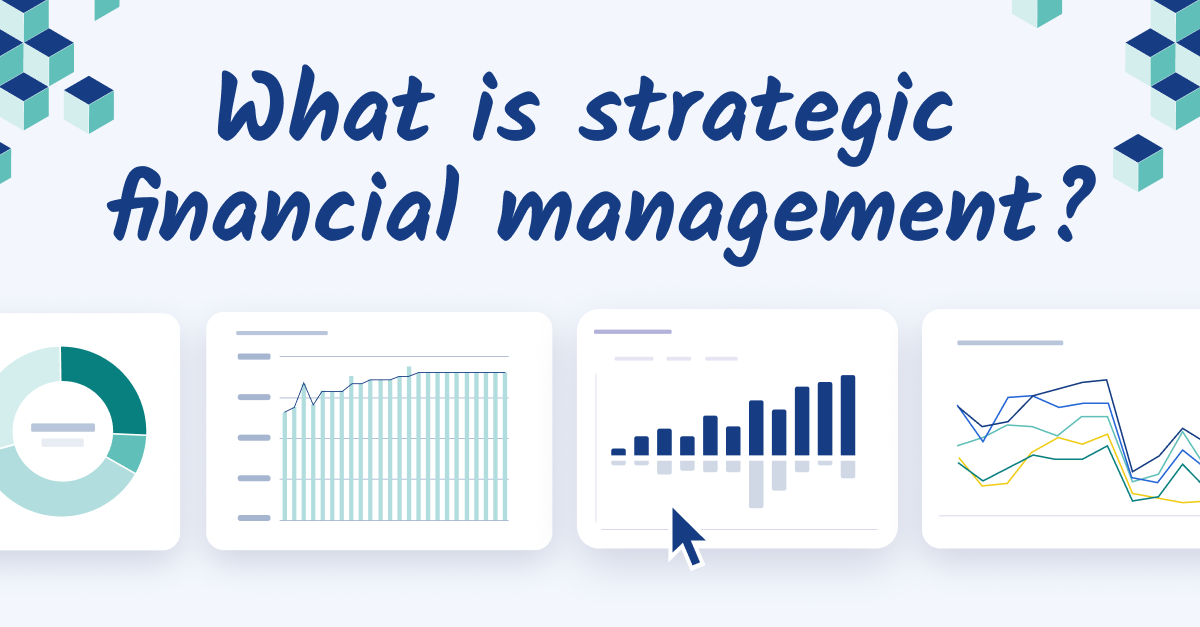What is capital allocation?
Capital allocation is the process of distributing a company’s financial resources among various projects, departments, or investments. This involves choosing where to spend money to achieve the best returns and support the company’s strategic goals.
The decisions about capital allocation are typically made by the company's senior management team. This may include:
- Chief Financial Officer (CFO): The CFO oversees the company’s financial activities and plays a key role in making strategic investment decisions.
- Chief Executive Officer (CEO): The CEO has the final say on major investments and ensures that these decisions align with the company’s overall strategy and vision.
- Finance and FP&A Leaders: Senior finance managers and FP&A (Financial Planning and Analysis) professionals analyze data, create financial models, and provide recommendations to support informed decision-making.
- Board of Directors: For larger investment decisions, the board of directors may be involved to provide oversight and approval.
Together, these leaders evaluate potential investments, consider the risks and rewards, and decide where to allocate the company’s resources to achieve the best possible outcomes.
Properly allocating capital ensures that resources are invested in projects with the highest potential for profitability, avoiding wasteful spending and aligning investments with the company’s long-term strategy. It also provides a cushion against economic downturns for greater financial stability.
Capital allocation takes place continuously throughout a company's lifecycle, but there are specific times when it becomes a focal point:
- Annual budgeting process: During the annual budgeting cycle, companies decide how to allocate resources for the upcoming year, setting priorities for various departments and projects.
- Strategic planning sessions: Companies often engage in multi-year strategic planning, where they determine long-term goals and the capital required to achieve them.
- Quarterly reviews: During quarterly financial reviews, companies assess their performance and may reallocate resources based on the latest financial data and changing priorities.
- Project approvals: Whenever a new project or investment opportunity arises, such as launching a new product, entering a new market, or acquiring another company, capital allocation decisions are made.
- Economic changes: In response to significant economic shifts or market conditions, companies may adjust their capital allocation to mitigate risks or take advantage of new opportunities.
- Performance evaluations: After reviewing the performance of past investments, companies may reallocate resources to improve returns or cut losses.
Overall, effective capital allocation is an ongoing process that requires constant evaluation and adjustment to ensure resources are used effectively to drive growth and maximize profits.

Types of capital allocation
There are different ways to allocate capital, each serving distinct purposes within a company. Understanding these types can help in making informed decisions about where to invest resources for maximum impact.
Here's a closer look at each type:
1. Operational capital allocation
This focuses on funding day-to-day business activities and operational needs, including expenses like salaries, utilities, and raw materials. This ensures the company’s business operations run efficiently.
For example, a finance department might allocate funds to upgrade accounting software for timely and accurate financial reporting.
2. Strategic capital allocation
This involves investing in long-term projects that align with the company’s strategic goals. This could include research and development (R&D), market expansion, or acquiring new technology.
Strategic investments are crucial for sustaining long-term growth and competitiveness. For example, as part of its investment strategy, a company might choose to invest in developing a new financial planning tool that integrates advanced analytics.
3. Growth capital allocation
This type of capital allocation strategy is dedicated to funding initiatives that drive significant growth, such as launching new products, entering new markets, or scaling existing operations.
An example would be allocating funds to expand into an emerging market by setting up new offices and hiring local talent. Growth capital fuels expansion and would help the company capture new opportunities and increase market share.
4. Capital expenditures (CapEx)
CapEx involves spending on physical assets like machinery, buildings, and technology infrastructure. These investments are typically large and have a long-term impact on the company’s operations.
For example, business leaders may invest in a state-of-the-art data center to support the company's growing digital operations. Proper CapEx allocation ensures the company has the necessary infrastructure to support its operations and growth.
5. Working capital allocation
Working capital allocation involves managing short-term assets and liabilities to ensure the company can meet its day-to-day operational expenses. This includes managing inventory levels, accounts receivable, and accounts payable.
For example, a company might allocate funds to increase its inventory during peak seasons to meet higher demand. Effective working capital management ensures liquidity and smooth operations.
Assessing investment opportunities: what finance leaders need to know
Assessing investment opportunities is vital because it ensures that a company’s resources are allocated to projects and initiatives with the highest potential returns. This careful evaluation helps avoid wasteful spending, supports strategic goals, and enhances financial performance.
Once the types of capital allocation are understood, evaluating specific investments within those categories ensures that the chosen projects are aligned with the company’s strategic objectives and provide the best possible financial returns. This evaluation process helps prioritize investments, ensuring resources are used efficiently and effectively.
What does the process look like?
The process of assessing investment opportunities involves several key steps:
- Identifying opportunities: This involves recognizing potential investments across different types of capital allocation, such as operational, strategic, growth, CapEx, and working capital.
- Quantitative analysis: Using financial metrics like Return on Investment (ROI), Net Present Value (NPV), and Internal Rate of Return (IRR) to evaluate the potential financial returns of each investment.
- Qualitative analysis: Considering non-financial factors such as strategic fit, market position, and alignment with the company’s long-term goals.
- Risk assessment: Identifying potential risks associated with each investment and developing strategies to mitigate them.
- Scenario planning and sensitivity analysis: Envisioning different future states and their impact on the investment to understand the range of possible outcomes and prepare for uncertainties.
- Decision-making: Based on the analyses, making informed decisions about which opportunities to pursue.
What do you need to know?
To effectively assess investment opportunities, you need to have a thorough understanding of:
- Financial metrics and analysis techniques: Knowledge of ROI, NPV, IRR, and other key financial metrics is essential because these metrics provide a numerical basis to compare different opportunities and predict their potential returns. This helps in making objective and quantifiable decisions.
- Strategic goals: A clear understanding of the company’s long-term objectives and how potential investments align with these goals is crucial. This ensures that each investment supports the overall direction of the company and contributes to its strategic vision
- Risk management: The ability to identify and mitigate risks associated with each investment is vital. Understanding potential risks and having strategies to manage them can prevent significant losses and ensure that investments contribute positively to the company’s financial health.
- Market trends and competitive landscape: Awareness of external factors that could impact the success of the investment is necessary. Being informed about market trends and the competitive landscape helps in anticipating changes and positioning the company to take advantage of opportunities and defend against threats.

How to balance short-term and long-term goals
One of the most challenging aspects of capital allocation is striking the right balance between short-term needs and long-term goals. Both are crucial for the overall health and success of the company, but they often require different strategies and approaches.
Here are some strategies to help achieve this balance:
1. Align investments with corporate strategy.
Balancing short-term and long-term goals begins with a clear understanding of the company’s overall strategy. Make sure every investment supports the company’s vision and mission, whether it provides immediate returns or contributes to long-term growth.
For example, if a company’s strategy is to become a market leader in digital solutions, investments should focus on innovative technology projects that drive this vision forward.
2. Prioritize investments based on impact.
Prioritize investments based on their potential impact and alignment with strategic priorities. Try categorizing projects into those that deliver quick wins and those that promise substantial future benefits. This helps make sure the most critical and impactful projects receive the necessary funding and attention.
For example, investing in a marketing campaign for an existing product can yield immediate sales boosts, while funding a research and development project might lead to breakthrough products in the future.
3. Diversify the investment portfolio.
A well-balanced investment portfolio includes a mix of short-term and long-term projects. Short-term investments can provide quick returns and improve cash flow, while long-term investments drive sustained growth and innovation. Diversification reduces risk and ensures a steady stream of benefits over time, supporting both immediate needs and future ambitions.
For example, short-term investments might include upgrading office equipment to improve productivity, while long-term investments could involve purchasing a new facility to support future expansion.
4. Continuously monitor and adjust investments.
Balancing short-term and long-term goals is not a one-time task but an ongoing process. Regularly review and adjust investments based on performance data and changing market conditions. Continuous monitoring allows for timely adjustments, ensuring that resources are always allocated to the most promising and strategically aligned opportunities.
For example, if a new market trend emerges, it might make sense to shift resources from a long-term project to capitalize on the opportunity.
Top techniques for effectively allocating capital
Balancing short-term and long-term goals is crucial for sustainable growth, but it’s just one part of the equation. To truly master capital allocation, you need effective techniques that ensure every dollar is put to its best use.
Here are some strategies to help you make well-informed capital allocation decisions:
1. Use prioritization frameworks.
Prioritization frameworks, such as RACI (Responsible, Accountable, Consulted, Informed), can help systematically evaluate and rank investment opportunities. Start by defining each role:
- Responsible: Who is responsible for executing the task?
- Accountable: Who is ultimately accountable for the decision and outcomes?
- Consulted: Who should be consulted for input and feedback?
- Informed: Who needs to be informed about the progress and decisions?
Implementing a RACI framework clarifies roles and responsibilities, ensuring that every investment decision is well-considered and involves the right stakeholders. For instance, consider a project to develop a new financial planning tool:
- The Responsible party might be the project manager overseeing the day-to-day development.
- The Accountable person could be the CFO, who ensures the project aligns with financial goals and approves major decisions.
- The Consulted group could include senior finance managers and IT experts who provide input and feedback on design and functionality.
- The Informed individuals might be the CEO and board members who need regular updates on progress and key milestones.
This approach ensures that every investment decision is transparent, involves appropriate stakeholders, and aligns with the company’s strategic goals, reducing the risk of miscommunication and ensuring efficient use of resources.
2. Optimize capital structure.
Finding the right balance between debt and equity financing is crucial for optimizing your capital structure. Begin by assessing your current mix of debt and equity and understanding the cost of capital for each. Consider factors such as interest rates, repayment terms, and the impact on financial ratios.
If interest rates are low, financing a new project through debt might make sense to benefit from lower borrowing costs while preserving equity for future flexibility. If your debt levels are high, issuing equity might be preferable to avoid increasing financial risk. This balance lowers the cost of capital, enhances financial stability, and provides the flexibility needed to respond to opportunities and challenges.
3. Leverage data and analytics.
Advanced data analytics and business intelligence (BI) tools can provide insights to make data-driven decisions. Start by integrating these tools into your financial systems to collect and analyze data in real-time. Use dashboards and reports to monitor key performance indicators (KPIs) and identify trends and patterns.
BI tools can help you track the performance of ongoing projects, compare them against historical data, and forecast future outcomes. This data-driven approach enables more informed decisions and adjustments to strategies as needed. Decisions based on solid evidence lead to better outcomes and more efficient use of resources.
4. Implement continuous improvement processes
Continuous improvement processes can help regularly evaluate and enhance capital allocation strategies. Set clear goals and performance metrics, and use tools like root cause analysis to identify issues and develop solutions.
Regularly reviewing investment outcomes allows learning from past experiences and refining allocation methods. If an investment didn’t perform as expected, analyzing why and adjusting criteria or processes ensures that capital allocation strategies evolve with changing business conditions and opportunities.
These techniques provide a clear path to making informed, strategic investments that align with your company's goals. Optimizing capital allocation ensures that resources are used effectively to drive growth and maximize profitability.
Leveraging FP&A software like Cube
FP&A software (like Cube) can be a valuable tool for effective capital allocation because it helps streamline processes, provides insightful data, and enhances decision-making.
Here’s a closer look at how FP&A software can assist in the capital allocation process:
- Advanced analytics: FP&A software includes advanced analytics tools that can analyze large datasets to identify patterns and trends. These insights help forecast future performance and highlight potential investment opportunities for more informed decisions.
- Business intelligence (BI) features: Integrated BI features in FP&A software present data in dashboards and reports, allowing real-time monitoring of key performance indicators (KPIs). This provides a clear view of your financial landscape, helping you track performance and adjust investments as needed.
- Streamlined financial processes: FP&A software automates tasks like budgeting, forecasting, and financial reporting. This reduces errors and improves accuracy, ensuring that all departments are aligned with the overall financial strategy.
- Real-time data analysis: FP&A software enables real-time data analysis, providing immediate insights and facilitating quick decision-making. Accessing up-to-date information allows you to respond swiftly to changing market conditions and adjust your capital allocation strategies accordingly.
With FP&A software, you can enhance the efficiency and effectiveness of your capital allocation process, making more strategic and informed investment decisions.

Developing a robust capital allocation strategy
Creating a robust capital allocation strategy is essential for ensuring that your resources are used effectively to drive growth and achieve your company’s long-term goals.
Here are the key steps to develop an effective strategy:
1. Set clear objectives.
Begin by defining clear and measurable objectives for your capital allocation. These should align with your company’s overall strategic goals and provide a roadmap for where resources should be directed.
For example, if your objective is to expand into new markets, allocate capital to market research, marketing campaigns, and setting up new offices. Clear objectives help ensure that every investment supports your broader business goals.
2. Involve key stakeholders.
Engage key stakeholders in the decision-making process to gather diverse perspectives and expertise. This includes senior management, finance teams, and department heads. Their insights can help identify the most promising investment opportunities and ensure alignment across the organization.
Involving stakeholders ensures that everyone is on the same page and that investments are supported by those who will implement them. It also helps in gaining buy-in and reducing resistance to strategic changes.
3. Use data-driven decision-making.
Leverage FP&A software and other analytical tools to collect and analyze data. Make investment decisions based on quantitative metrics like ROI, NPV, and IRR, as well as qualitative factors such as strategic fit and market conditions.
Data-driven decision-making helps you choose investments that offer the best potential returns and align with your strategic goals. It reduces reliance on intuition and increases the likelihood of making sound investments.
4. Monitor and adjust.
Continuously monitor the performance of your investments and be prepared to make adjustments as needed. Use real-time data and feedback to track progress against your objectives and make informed decisions about reallocating resources.
Regular monitoring ensures that you can quickly identify and address underperforming investments. It also allows you to capitalize on emerging opportunities and adjust your strategy to stay aligned with changing market conditions.
5. Maintain flexibility.
Build flexibility into your capital allocation strategy to adapt to unexpected changes and opportunities. Avoid rigid plans that can’t be adjusted as new information becomes available.
Flexibility allows your company to respond swiftly to market shifts, competitive pressures, and new opportunities. It ensures that your capital allocation strategy remains relevant and effective over time.
Conclusion: effective capital allocation
Effective capital allocation is key to driving growth and achieving long-term success. By following these steps, you can be sure to make strategic investments that maximize returns.
Don’t miss the opportunity to see how Cube’s FP&A software can streamline this process. Request a demo today to discover how Cube can enhance your capital allocation strategy and support your financial goals.



.png)











